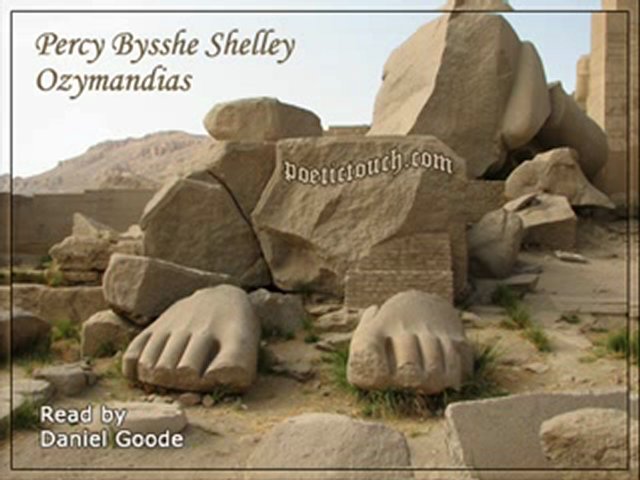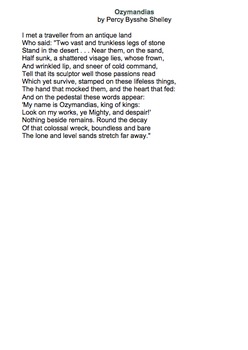

Horace in his Odes writes that he’s created a monument more enduring than bronze, and Shakespeare at the beginning of Sonnet 55 says: The idea that poetry is more enduring than other art forms and than material things like monuments is an old one–one that many poets before Shelley wrote about. Do literature and art allow us to transcend the everyday, physical world? Look at how the first 8 lines are stacked on top of the last 6, like a statue on a pedestal.įinally, think about what Shelley is saying about the relative impermanence of the physical world and the things we think are important in it. You might also notice how those last 6 lines, the lines where we get the inscription are kind of like a pedestal for the first 8 lines of the poem. In addition, what remains most prominent of Ozymandias’s statute is the inscription on the pedestal–in other words, the words remain more clearly than his fearsome monument. But unlike the monument, the work of literature is not subject to time and decay. By using the sonnet form he’s drawing attention to the formal, artificial, or constructed nature of his work–just as a monument is a formal, artificial, constructed thing. The lone and level sands stretch far away. Of that colossal wreck, boundless and bare, -E Look on my works, ye mighty, and despair!’ -E `My name is Ozymandias, King of Kings: -D CĪnd on the pedestal these words appear: -E The hand that mocked them and the heart that fed. Which yet survive, stamped on these lifeless things, -–D Tell that its sculptor well those passions read -C

Half sunk, a shattered visage lies, whose frown -BĪnd wrinkled lip and sneer of cold command -A Who said: “Two vast and trunkless legs of stone -–B I met a traveller from an antique land -A While it’s not exactly the rhyme scheme of a Petrarchan sonnet, it’s closer to it than it is to a Shakespearean sonnet and uses the 8/6 line structure of a Petrarchan sonnet. Or perhaps rhyming “frown” and “stone” sounded closer in Shelley’s day than it does to us today. Here’s the rhyme scheme for “Ozymandias.” Some of the rhymes are near rhymes or off rhymes (that is, they’re not exact). The Petrarchan sonnet is divided into an 8-lined octave that creates a situation and a 6 line sestet that comments on the situation.


“Ozymandias” is a sonnet, in this case a variant of a Petrarchan sonnet. The lone and level sands stretch far away.” Explication Of that colossal Wreck, boundless and bare Look on my Works, ye Mighty, and despair! The hand that mocked them, and the heart that fed Which yet survive, stamped on these lifeless things, Tell that its sculptor well those passions read Half sunk, a shattered visage lies, whose frown,Īnd wrinkled lip, and sneer of cold command, Who said– “Two vast and trunkless legs of stone


 0 kommentar(er)
0 kommentar(er)
